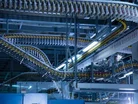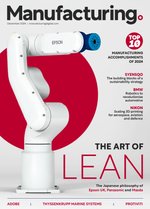COVID-19: automation trends in manufacturing - Blue Yonder

Alan Duncan, Senior Director of Industry Strategy (Manufacturing), EMEA, Blue Yonder on current trends relating to COVID-19 and automation.
“COVID-19 is not driving a need for automation in and of itself, but companies emerging from this current crisis will shift in this direction from their current state. Businesses will keep going as best they can – from recovering cash and operations, to identifying and mitigating medium and long term risks to become more resilient, and building a platform for sustainable growth in the future. The short-term focus will be on getting visibility over demand, inventory and supply disruptions through tools like Control Towers; in the medium-term, this will shift to trying to eliminate the extraordinary costs that have occurred during the crisis – cost optimisation, scenario planning, seeking alternative sources of supply, and in the longer-term the focus will be on sustainable profitable agility.”
What are the challenges manufacturers are facing when it comes to automation due to COVID-19?
“Depending on the type of automation, companies are finding that they’re not always able to cope with the level of agility that’s required to make it work in practice. In the past, companies installed automated warehouses to reduce costs and increase output, but discovered that during periods of extreme volatility and uncertainty that automation became a constraint rather than a benefit. In response, companies moved to reduce the level of automation in their warehouses – replacing it with much more flexible human resources. However, we’ve seen recent labour shortages and a lack of affordable warehousing capacity leading to companies giving automation serious consideration.
What are the benefits of automation during a crisis like COVID-19?
“We have seen incredibly volatile and unpredictable demand patterns for many products – particularly food, beverage and consumer goods. Normal statistical forecasting techniques (based on sales history) have been unable to accurately predict future demand. However, machine learning algorithms have been able to spot patterns and correlations from a much broader array of seemingly unrelated data points to learn the demand patterns and provide forecasts with useable accuracy.”
How can future crises be mitigated by the use of automation?
“Machine learning has proven its ability to improve forecasting during the current crisis. It will perform even better next time around, having “learned” from the current period. It will help mitigate the impact of future crises through automation of responses to supply chain disruption and revised sourcing strategies.
SEE ALSO:
For more information on manufacturing topics - please take a look at the latest edition of Manufacturing Global.
- Accenture: Concerns Growing Over Geopolitical TensionProduction & Operations
- Jeff Winter: The Manufacturing Influencer On Industry 4.0Digital Factory
- LG Electronics Enters Smart Factory Market with AI TechSmart Manufacturing
- Key Themes at Manufacturing & Mobility LIVE 2024Production & Operations

